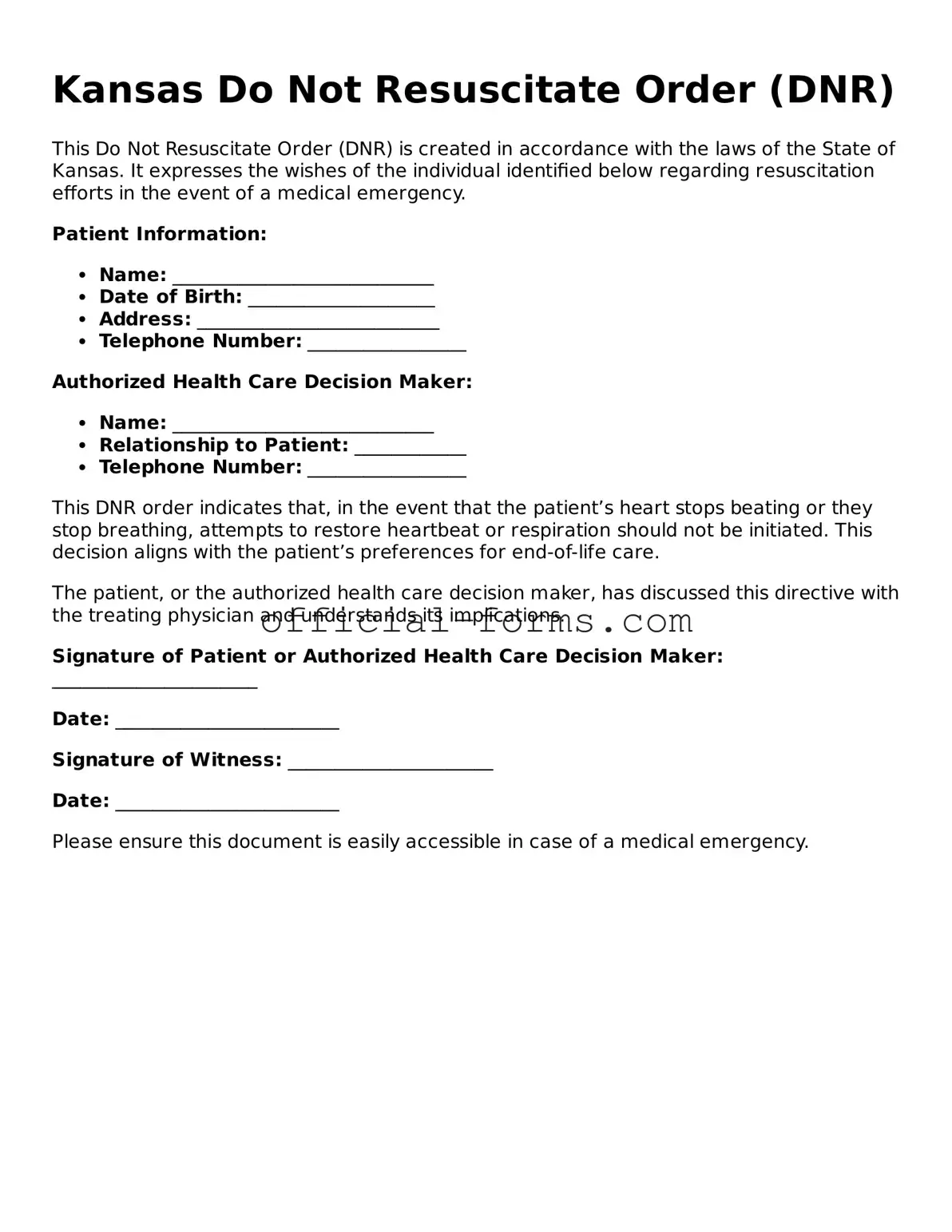Filling out a Do Not Resuscitate (DNR) Order form in Kansas is a critical task that requires careful attention. However, many individuals make common mistakes that can lead to confusion or unintended consequences. Understanding these pitfalls can help ensure that the form accurately reflects a person's wishes regarding medical treatment.
One frequent error is failing to provide the necessary personal information. The form requires specific details such as the patient’s full name, date of birth, and contact information. Omitting any of this information can render the form invalid or difficult to interpret in an emergency situation.
Another common mistake is not having the form signed by the appropriate parties. In Kansas, the DNR must be signed by the patient, or by a legally authorized representative if the patient is unable to sign. Without the proper signatures, healthcare providers may not honor the DNR request, leading to unwanted resuscitation efforts.
Many people also overlook the importance of discussing their wishes with family members and healthcare providers. A DNR order should not be a surprise to loved ones or medical staff. Open communication can prevent misunderstandings and ensure that everyone involved is aware of the patient's preferences.
Additionally, individuals sometimes neglect to update their DNR orders when their medical situation changes. A DNR that was appropriate at one time may no longer reflect a person's wishes due to changes in health status or personal beliefs. Regularly reviewing and updating the form is essential.
Another mistake is using outdated forms or incorrect versions. Legal documents can change over time, and it is crucial to ensure that the most current version of the DNR form is being used. Using an outdated form can lead to legal complications and may not be honored by medical personnel.
Finally, some individuals fail to distribute copies of the DNR order to relevant parties. A DNR form should be accessible to healthcare providers, family members, and anyone else who may be involved in the patient's care. Without proper distribution, there is a risk that the order will not be followed during a medical emergency.
By being aware of these common mistakes, individuals can take proactive steps to ensure that their DNR orders are filled out correctly and reflect their true wishes. Proper planning and communication can make a significant difference in emergency medical situations.
